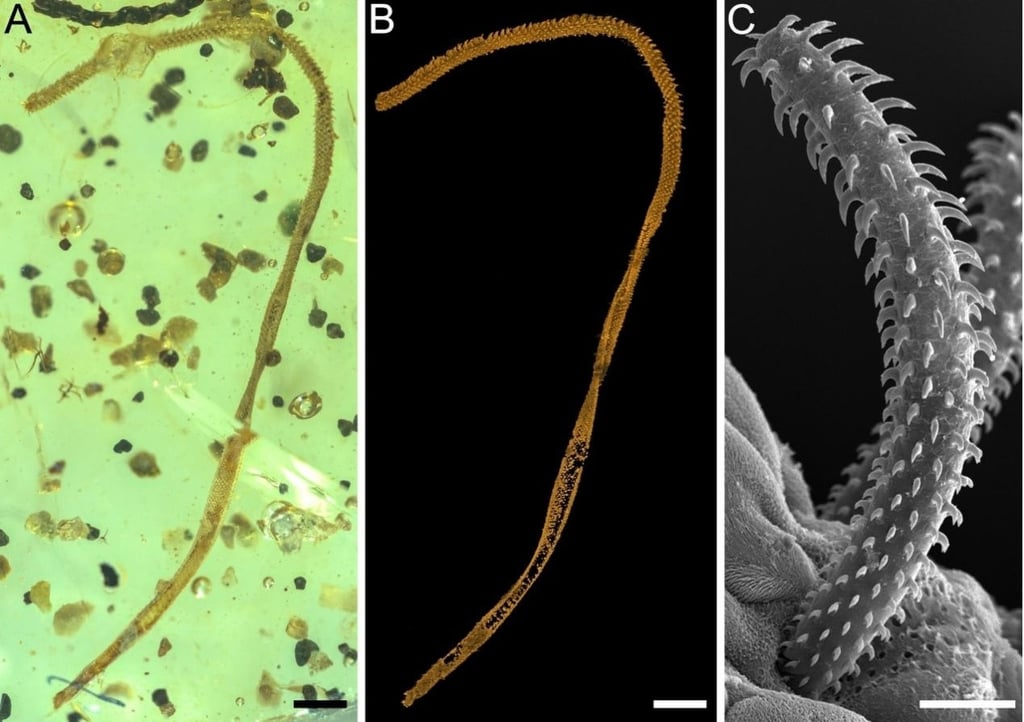Advertisement
Chinese scientists identify ‘bizarre’ find as world’s first parasite worm fossil
- The fossilised tentacle is similar to modern marine tapeworms and was trapped in amber around 99 million years ago in northern Myanmar
- Parasitic worms are found in all major vertebrates but their soft tissues mean they are rarely preserved in the geological record
Reading Time:2 minutes
Why you can trust SCMP
1

Nearly 100 million years ago, a shark or ray infected with an ancient tapeworm became stranded on the shore of what is now known as Myanmar. As a dinosaur feasted on the marine creature, it ripped apart the parasite, flinging it into the resin of a nearby tree.
That is the best guess of a scientific team from China, Myanmar, Germany and Britain, led by researchers at the Chinese Academy of Sciences, who puzzled over the “bizarre fossil” trapped in Cretaceous amber in northern Myanmar’s Kachin state.
The find is “the first body fossil of a tapeworm”, according to Wang Bo, a professor with the Nanjing Institute of Geology and Palaeontology, in a CAS statement.
Parasitic worms infect all major vertebrates in the world, but have left few traces, partly as a result of living inside another animal’s intestine.
They are also “rarely preserved in the geological record,” due to their lack of bones or exoskeletons, the team said in a paper published by the peer-reviewed journal Geology on March 22.
The Myanmar tapeworm could provide a glimpse into the ancient history of the parasitic worm and open up opportunities to examine soft-bodied organisms often lost in the fossil record, the researchers said.

Advertisement